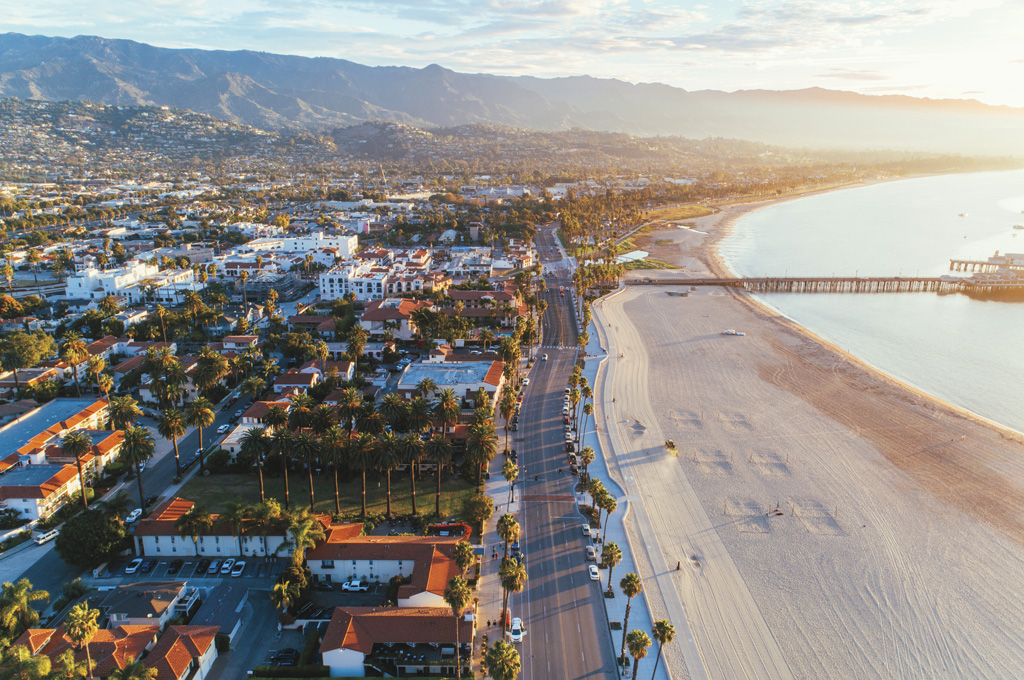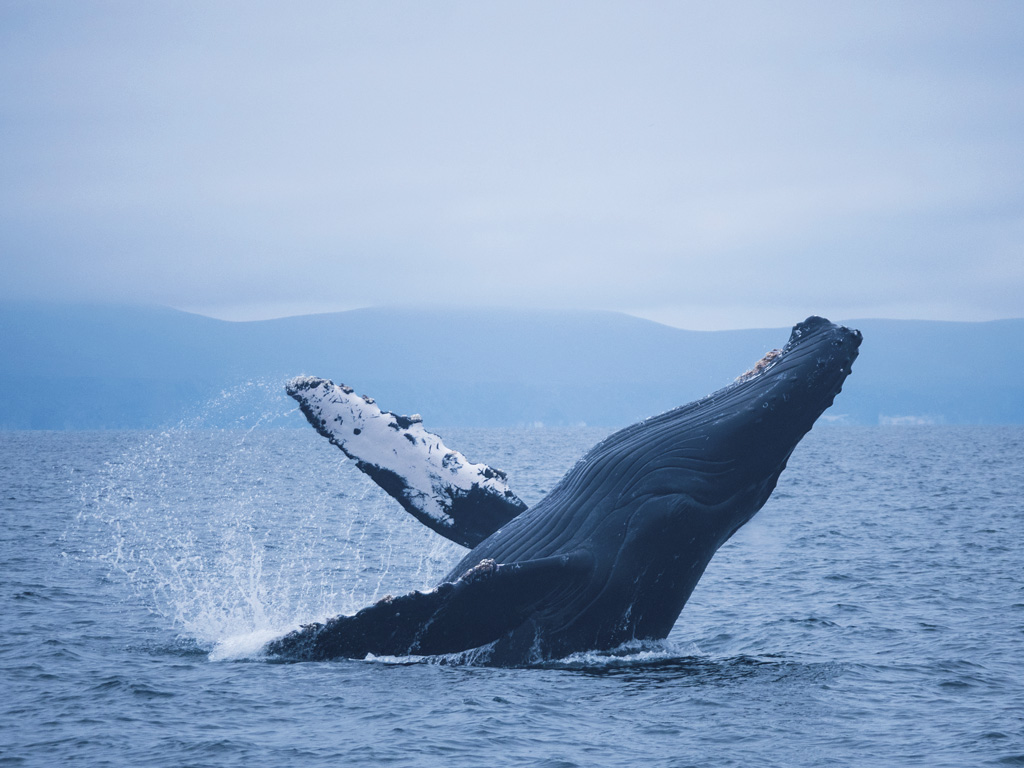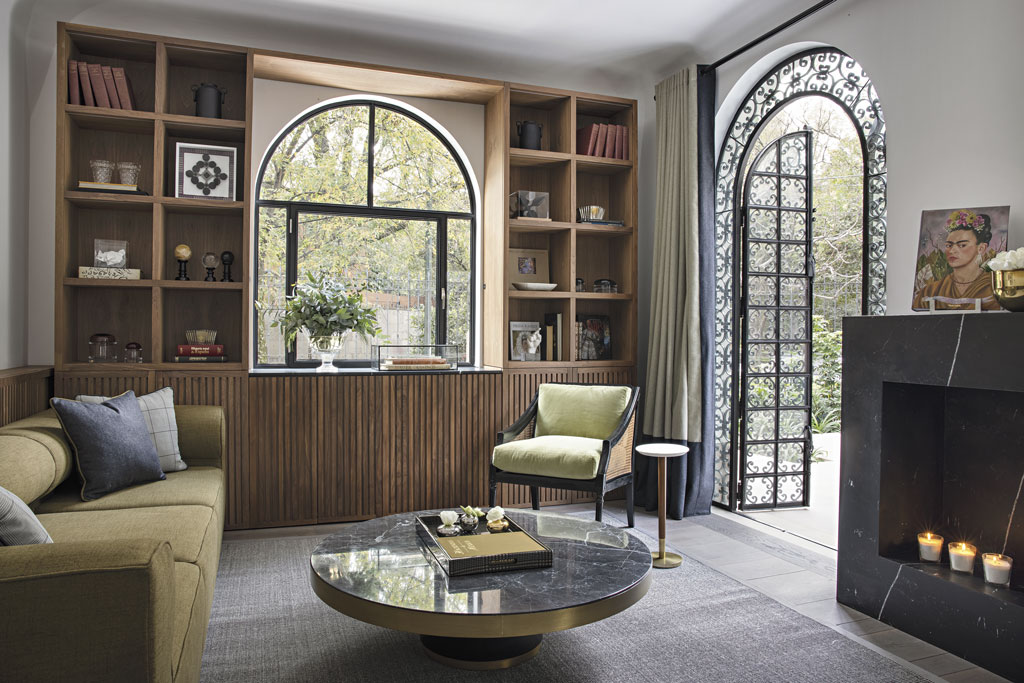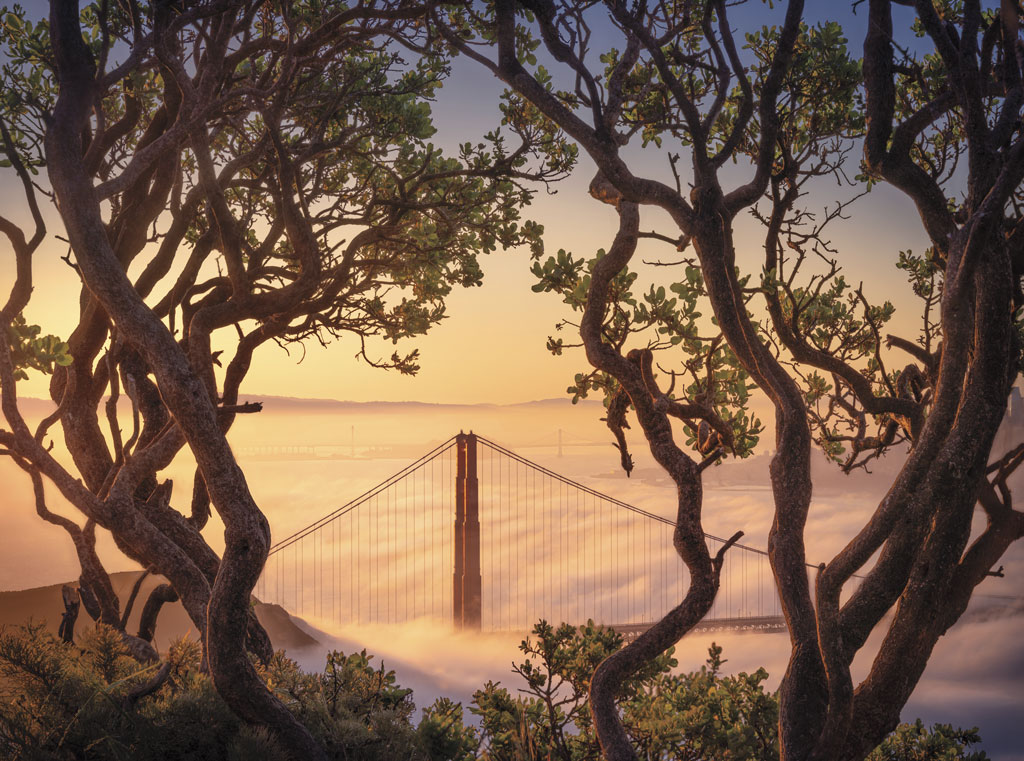We passed by a red-and-white-striped buoy marker — a popular hangout spot, it seemed, for fuzzy brown sea lions who like to sun themselves on the wide base — as we glided into the Santa Barbara Channel.
There was a grayish cloud cover and a veil of haze. The blue sea’s dappled surface mimicked the clouds’ shape, almost making it difficult to know where the water stopped and the sky began.
My family and I were on a whale-watching excursion aboard the Condor Express, a fast catamaran with a teak-paneled cabin and upper sundeck for sightseeing, which offers whale-watching year-round. The channel seemed vast. Finding a whale, I thought, would be like finding a needle in a haystack.
Onboard naturalists educated us about whales and the challenges they face. We learned that gray whales have returned from the brink of extinction twice, and that whales play an important role in mitigating climate change. During their long lives, whales accumulate carbon in their bodies, keeping it out of the atmosphere even after their deaths.
Protectors of the channel have a new reason to celebrate. It was named a Whale Heritage Area in October 2023 — only the second in California and ninth in the world — recognizing the region’s commitment to responsible tourism. The designation will help support ongoing research and conservation efforts.
A marine sanctuary, the Santa Barbara Channel, extending from Santa Barbara to Ventura, is renowned for its abundant biodiversity and thriving marine ecosystem, the result of warm and cool currents from north and south meeting and creating nutrient-rich waters. It’s a refuge for more than 25 different marine mammals, a higher number than in other California coastal areas. Still, whales like Scarlet, a friendly humpback who has been visiting the channel for 15 years, have scars from propellers. The Condor Express is a quad-jet boat with no sharp propellers beneath, so it can approach whales and dolphins safely.
Forty-five minutes into our excursion, things started to get interesting. Up ahead, we could see a patch of choppy water, but as we got closer, we realized it was hundreds of dolphins frolicking in the sea. Our captain, Captain Dave, told us the curious dolphins loved to surf in the jet boat’s wake, and indeed, they quickly surrounded us, jumping and spinning in the drag. We approached the mist-shrouded cliffs and sea caves of Santa Cruz Island, the largest of the five islands that comprise Channel Islands National Park. Considered the “Galapagos of the U.S.,” the island chain has more than 2,000 species of plants and animals, 145 unique to the islands. Visitors can access the islands on a day trip with Island Packers, which departs from Ventura Harbor. We cruised along the coastline, and then Captain Dave told us to look starboard. He had spotted a minke whale. My son and I oohed and aahed as its dorsal fin glided in and out of the water like a serpent.
The steep east-west-facing Santa Ynez Mountain range backs the coastal city of Santa Barbara. The red-tile-roof buildings, moderate Mediterranean-like climate and mix of cypress, oak and palm trees make it feel like Tuscany, the South of France and Spain’s Alicante all in one. The best time to see whales is mid-February through mid-May, when more than 28,000 gray whales journey through the channel headed to the Arctic to breeding grounds in Baja. Visitors can also see humpback whales from May through September and the giants of the ocean, blues whales, during the summer. As my family and I explored the city, it was clear that the residents revered these gentle creatures.
At the Santa Barbara Museum of Natural History, my two sons loved playing beneath the 72-foot-long blue whale skeleton nicknamed Chad. Clearly too large to go inside, it sits in front of the museum near the parking lot. Life-size whale models hang in the entryway at the Sea Center, an interactive aquarium on Stearns Wharf where visitors can pet small sharks and touch whale baleen, the filter-feeding system found in the jaws of large whales. The gray whale baleen felt like silky straw. On my way out, I noticed a quote on the wall from Jean-Michel Cousteau — Jacques Cousteau’s son is a Santa Barbara resident and influential environmentalist — that read, “Protect the ocean, and you protect yourself.”
We are undoubtedly connected to whales. Both our fates may depend on just how much we care.
Hotels for Nature Lovers
The seaside Ritz-Carlton Bacara, Santa Barbara (from $838 per night) in Goleta hosts Jean-Michel Cousteau’s Ambassadors of the Environment program. Through excursions and activities, adults and children can learn about the Gaviota Coast’s habitats and traditional Chumash culture.
A beloved retreat for Hollywood elites since 1918, El Encanto, A Belmond Hotel (from $947 per night) in the hillside Riviera neighborhood feels timeless with California Craftsman and Spanish colonial architecture and large luxurious rooms with fireplaces. It’s one of the most family-friendly properties in Santa Barbara: kids can explore seven acres of gardens, spot resident turtles in the lily pond and splash in a zero-edge swimming pool.
On the edge of the Funk Zone, a lively neighborhood where wineries and art galleries fill industrial buildings, the historic Hotel Californian (from $729 per night) is within walking distance of the harbor. The Moorish interior design by Martyn Lawrence Bullard transports guests to a riad in Marrakech.
A stay at the luxe San Ysidro Ranch (from $2,495 per night all-inclusive) puts visitors within easy striking distance of some of the area’s best hiking trails, like the popular Cold Spring Trail Loop. The hotel has 38 cottages shaded by sycamore and oak trees and memorable dining in a 19th-century citrus packing house. Guests can book private dinners in the firelit Old Adobe, a California historic landmark that dates to 1825. Try specialties like sea urchin with Meyer lemon and a smoky blood orange margarita prepared tableside.
The Steward Santa Barbara (from $350 per night), a new hotel in Goleta, has 87 suites. Horticulturist Joseph Sexton created one of the area’s first nurseries on the grounds in the 1860s; the property, near the magical Monarch Butterfly Grove at Ellwood Mesa, where monarch butterflies migrate each year, still protects many of Sexton’s original trees and plants.











